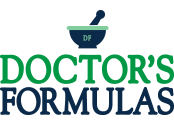Coenzyme Q10: Physical Capacity & Cardiovascular Risk
Levels of Plasma Coenzyme Q10 Are Associated with Physical Capacity and Cardiovascular Risk in the Elderly
Abstract
Coenzyme Q10 (CoQ10) is an essential factor for mitochondrial activity and antioxidant protection of cells, tissues, and plasma lipoproteins. Its deficiency has been associated with aging progression in animals and humans. To determine if CoQ10 levels in plasma can be associated with frailty in elderly people (aged > 65), we studied the relationship of CoQ10 levels in blood with other parameters in plasma and with the physical activity and capacity in aged people. Our results indicate that high CoQ10 levels are directly associated with lower cardiovascular risk measured by the quotient total cholesterol/HDL cholesterol. Furthermore, high CoQ10 levels were found in people showing higher physical activity, stronger muscle capacity. CoQ10 also showed a strong inverse relationship with sedentarism and the up-and-go test, which is considered to be a frailty index. Interestingly, we found gender differences, indicating stronger correlations in women than in men. The importance of the maintenance of CoQ10 levels in elderly people to avoid sarcopenia and frailty in elderly people is discussed.
Introduction
Coenzyme Q10 (CoQ10) is a key component for cell metabolism and antioxidant protection. In mitochondria, CoQ10 is located into the inner mitochondrial membrane which acts as an essential component of the electron transport chain (ETC). In mitochondria, and in the rest of the membranes, CoQ10 is the main antioxidant for the lipidic milieu reducing oxidative damage of phospholipids and controlling by this mechanism cell survival. Furthermore, in plasma lipoproteins, CoQ10 is the main protective agent reducing the peroxidation of these proteins, reducing cardiovascular risk by decreasing oxidation of low-density lipoproteins (oxLDLs), especially in elderly people.
Because of these essential activities, CoQ10 can be considered a key component for the physiology of cells that play an important role in the progression of aging. In fact, decreasing levels of CoQ10 have been associated with the dysfunction of several organs in aged people. CoQ is synthesized by a synthone comprising at least 11 different proteins acting between the endoplasmic reticulum and mitochondria. The inability of cells to synthesize CoQ produces many severe symptoms, mainly affecting the cerebellum, the kidneys, and muscle. This indicates the importance of the maintenance of CoQ levels for correct physiological activity in many organs.
In previous studies, we determined that CoQ10 levels showed different behavior in young from that in old people, representing a different physiological response that is probably associated with the levels of oxidative damage [11]. Furthermore, CoQ10 levels showed an inverse relationship with obesity and with oxidative damage in plasma. CoQ10 can be obtained from the diet although the amount obtained seems to be very low from this source. In blood plasma, CoQ10 levels have been studied in aging to determine whether they can be aging-related biomarkers. Taking into consideration the essential role of CoQ10 in many metabolic and antioxidant activities in the organism, the present work tries to determine whether CoQ10 levels in plasma can be associated with frailty risk in elderly people and if CoQ10 can be considered a therapeutic target to reduce sarcopenia and improve functional capacity during aging.
Frailty is a key dysfunction in elderly people that severely affects the capacity of individuals to maintain their independence. Frailty is also associated with comorbidities occurring in aging that impairs the health of elderly people. In human skeletal muscle, aging is associated with the accumulation of mitochondrial DNA damage, which contributes to a reduced function of cells and organs. This is reflected in skeletal muscle by changes in the fiber type profile and in the number and size of the fibers in clear relationship with sarcopenia. Other studies demonstrate that mitochondrial function is impaired in the skeletal muscle of elderly people in pre-frail conditions and that a decrease in the activity of the mitochondrial respiratory chain is associated with lower physical performance and sarcopenia.
Moreover, mitochondrial dysfunction, oxidative stress, and DNA damage are associated with the decay in muscle capacity and sarcopenia. It seems now clear that mitochondrial activity and turnover affect many aspects of muscle physiology associated with sarcopenia and the loss of capacity in older individuals. It is known that levels of CoQ10 decrease in many tissues and organs during aging. We can then also consider CoQ10 levels as a probable factor affecting frailty by accelerating sarcopenia by reducing the activity of mitochondria in muscle. In fact, in aged animals, the amount of CoQ in mitochondria is reduced in skeletal muscle, suggesting a direct relationship of this decrease with the mitochondrial dysfunction associated with aging.
Furthermore, indirect evidence indicates the importance of CoQ10 in the maintenance of physical activity in several diseases, many of them associated with aging. In animal studies, CoQ10 supplementation improved plasma parameters associated with acute exercises such as lactate, ammonium, and CK, and also increased liver and muscle glycogen content, improving exercise performance and reducing fatigue. Additionally, animal studies have also shown a clear decrease of CoQ levels in muscle in aged individuals. Supplementation with CoQ10 prevented mitochondrial dysfunction in muscle, indicating a clear role of CoQ10 in mitochondrial activity and probably in muscle capacity during aging.
In humans, patients suffering from osteoarthritis and healthy elderly people showed a negative significant correlation between oxidative stress and muscle function. In this study, plasma CoQ10 levels were positively associated with antioxidant capacity, muscle mass, strength, and endurance in these patients, indicating a relationship with physical capacity. On the other hand, the amount of CoQ10 is frequently reduced in the muscle of patients suffering mitochondrial myopathies, and supplementation has been suggested to improve motor function. Furthermore, CoQ10 levels in plasma have been associated with the control of motor activity in multiple system atrophy patients. In these patients, lower CoQ10 levels in plasma are associated with higher severity of motor control dysfunction.
Our results agree with the relationship between plasma CoQ10 levels and pathological conditions. In agreement with cardiovascular studies such as Q-SYMBIO, we found that high CoQ10 levels are associated with lower cardiovascular disease risk. This reinforces the evidence indicating the therapeutic use of CoQ10 in the prevention of cardiovascular diseases. The relationship of high CoQ10 with higher physical activity is also related to better cardiovascular health and heightens the importance of this compound in the function of the cardiovascular system and the protection of endothelial vasculature.
On the other hand, although muscle cannot incorporate plasma CoQ10 easily, vascular endothelium does incorporate this compound. Therefore, we cannot discard a direct role of high plasma CoQ10 levels in the endothelial function of arteries feeding the skeletal muscle. High CoQ10 levels could maintain the mitochondrial activity of the vasculature, and by this mechanism improve muscle capacity. In fact, long-term CoQ10 supplementation in rats improves endothelial function in aged rats. In humans, mitochondrial antioxidants such as CoQ10 improve endothelial function and the activity of antioxidant enzymes increasing exercise tolerance in patients with peripheral artery diseases. These results suggest that the maintenance of high levels of plasma CoQ10 inactive people contributes to the protection of the vascular endothelium against oxidative damage, preventing cardiovascular diseases such as atherosclerosis by this mechanism. Regarding physical performance, our results are in agreement with previous studies demonstrating a positive correlation between CoQ10/cholesterol levels and handgrip capacity in elderly people.
Furthermore, in the Fisher’s group study, low levels of the reduced form of CoQ10 were associated with lower muscle capacity, indicating that low levels of CoQ10 can be considered a plasma indicator of higher risk of sarcopenia. Our results also indicate that high levels of plasma CoQ10 are associated with a lower risk for suffering muscle dysfunction, reinforcing the relationship between plasma CoQ10 levels and muscle capacity.
Our previous studies also demonstrated that high physical activity is associated with higher CoQ10 levels in plasma and lower levels of lipid peroxidation, increasing antioxidant protection. Furthermore, sedentarism and obesity are associated with lower CoQ10 levels, which can also aggravate the oxidative damage produced by higher resting and exercise-induced intramuscular free radical release in aged muscle. Furthermore, we recently demonstrated that in professional soccer players, high CoQ10 levels are associated with low stress and damage markers and with higher performance during competition.
Animal studies have also demonstrated that supplementation with CoQ10 improves antioxidant capacity, especially in aged animals, reducing lipid peroxidation damage. Furthermore, exercise can induce CoQ-dependent antioxidant activities in aged muscle, preventing oxidative damage. This could be the reason the combination of moderate physical activity with CoQ10 supplementation counteracts mitochondrial dysfunction in the accelerated aging SAMP8 mouse model. Accordingly, in humans, the combination of exercise with CoQ10 has been suggested to counteract sarcopenia in the elderly. For this reason, CoQ10 supplementation has been suggested to decrease many dysfunctions associated with aging and age-related diseases.
Some important aspects remain to be studied. The different behavior of the ratio CoQ10/cholesterol in men and women needs further research to confirm this fact, at least in elderly people. On the other hand, it has recently been shown that older adults suffering physical frailty and sarcopenia show a release of small extracellular vesicles with mitochondrial signatures. The presence of these vesicles is associated with the senescence secretory phenotype associated with aging. To date, few articles have studied the role of CoQ10 in the evolution of this characteristic of aging, although none of them have been studied in muscle. Supplementation with CoQ10 reduces senescence phenotype in culture fibroblasts. Interestingly, CoQ10 protects endothelial cells against inflammatory response and the secretory phenotype preventing the release of IL-6, a known cytokine that affects muscle sarcopenia. The effect of CoQ10 has been directly related to its antioxidant activity.
Our study shows correlations between CoQ10 levels in plasma and physical activity in elderly people. Obviously, its main limitation is the lack of correlation of CoQ10 levels in muscle with its capacity, but due to obvious ethical aspects, this determination cannot be performed. However, our results and many other studies suggest that high plasma CoQ10 levels could be associated with the maintenance of physical capacity in elderly people. It is probable that supplementation with CoQ10 could improve physical capacity in addition to the known effects in the cardiovascular system. These relationships suggest that CoQ10 could be considered an important component for maintaining independence and health in aged individuals.
Furthermore, due to the difference in the number of men and women that participated in this study, gender differences must be considered with caution. Nevertheless, previous studies by our group also found gender differences in plasma. Our results suggest that gender may be an important factor in CoQ10 distribution in plasma, and studies must consider this fact in order to clarify whether these differences are relevant for aging and age-related diseases. Interestingly, recent studies have also demonstrated a gender-dependent bioavailability in response to a single dose of CoQ10 supplementation. This aspect must also be considered in further studies.
Conclusions
Story Source:
Levels of Plasma Coenzyme Q10 Are Associated with Physical Capacity and Cardiovascular Risk in the Elderly by Rocío de la Bella-Garzón,Cristina Fernández-Portero 2ORCID,David Alarcón 2ORCID,Josué G. Amián andGuillermo López-Lluch
Antioxidants 2022, 11(2), 279; https://doi.org/10.3390/antiox11020279

